Having never visited the Canary Islands before, I was excited to sneak some light lure and sea fishing kit on this year’s family trip. With the British summer holidays one of my busiest times of work, my own family holiday often has to wait till early autumn, but this seems a great time to visit.
So what could I expect? Lanzarote is an island of volcanic rock, closer to Africa than its parent country Spain. While the island itself is quite barren and rocky, the seas are rich with life. The hotels are rich with life, too. Mostly Brits on all-inclusive holidays, although we also met Germans, Dutch and Poles. 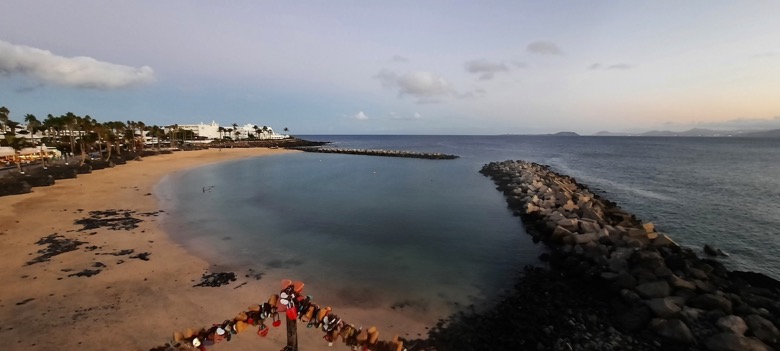
We also happened to be slap bang above Playa’s Blanca’s Flamingo Beach, which looked a great starting point. As well as a sandy bit for the family to paddle, it had two giant stony arms that were sure to hold marine life and fish. Anyone might have thought this was deliberate!
After the first holiday beer, it was eerie to walk down on the sand and spot what looked like two large black dogfish swimming in the sea. I still have no idea what they were, but it was like landing another planet. Next were the inevitable hordes of mullet and tiddlers. And everywhere beyond, rocks. Big, black volcanic rocks and an infinite variety of light and shade and endless corners to explore.
First bites
Sessions would be short but eventful, often with just an hour while the family were on the beach or the nipper was at kids club. I’d already bought a Spanish fishing licence- which is easily done online and saves faffing about with ID and offices on your holiday.
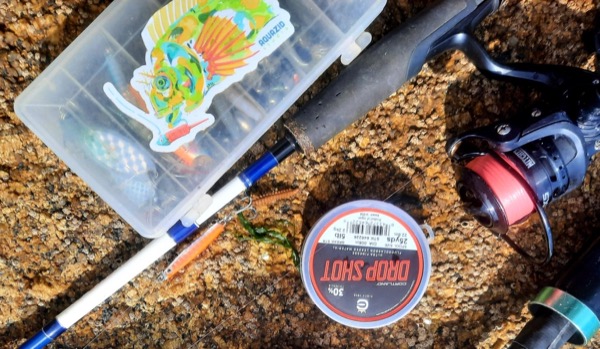
I kicked off with LRF gear (a simple 1-5g rod, plus reel spooled with 5lb braid). I started on tiny, tipped metals and dropshot presentations with Isome.

Straight away, it was obvious there were hungry fish present. The rod tip tapped and nipped constantly, before a lively ornate wrasse was hooked. The fish were fierce to put it mildly, if anything even more aggressive and inquisitive than our own in these warmer seas.
Sea bream were next- and these, for me, are a real treasure when fishing the Med or warmer Atlantic seas. While we only get two main species of sea bream in the UK, the Canaries get at least eight, including white bream (which look striped) and saddled sea bream. While the better bream can be tricky on lures, smaller fish bite eagerly and go well on light gear. Soon I had white, saddled and gold lined bream all ticked off.
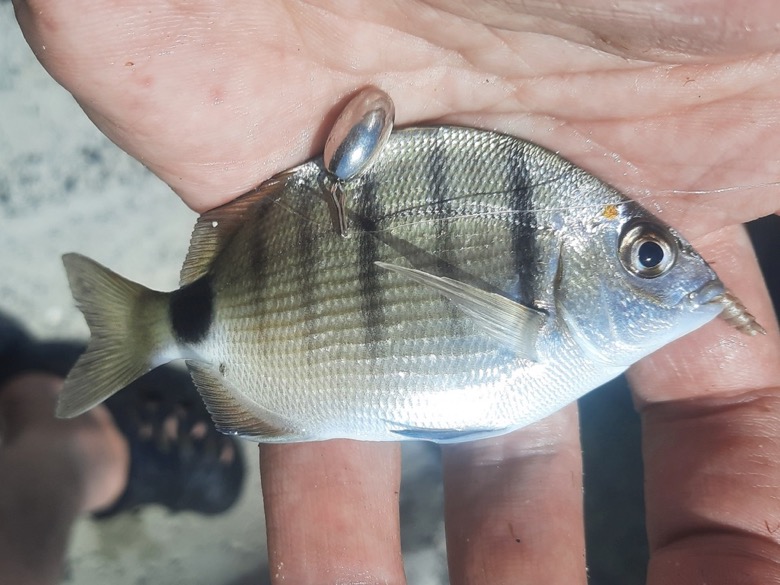

I tried to reign myself in with the fishing, but even I will admit it’s difficult not to have lots of extra “last” casts when the fish bite so freely.
But life was also great on the beach and strolling around the pools. Meal times quickly became deadly, too, when you can pile into any food and drink you want for a week. All day breakfast with lager for dessert? Sure thing. Grilled swordfish with pizza? No questions asked.
We had some great walks along the coast. My daughter was thrilled to spot lizards in stony walls, while I would look out to sea and marvel at the strange volcanoes in the distance.
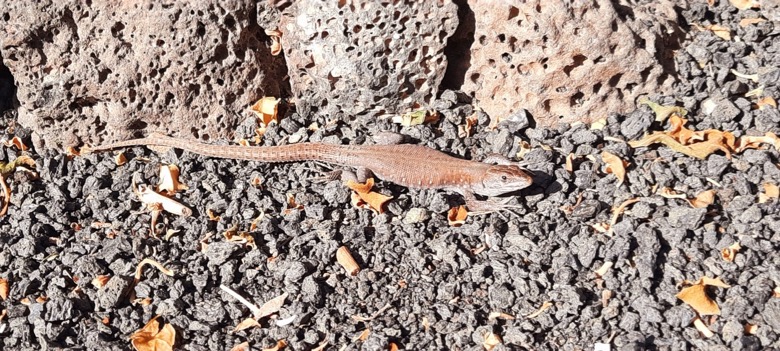
Up with the lizards
Never one to be put off by realistic expectations, I’d done a little reading and day dreaming about the Canaries and its fish. With species like barracuda and amber jack hunting the coast, I felt my best chance of a real rod bender had to be a larger predator. And so I would get up just before dawn, when the family were still sleeping, to get an hour in before breakfast.

What a peculiar thrill it was to pick my way to the rocks in the not-quite-light that first day. The sea defences were made of rocks, with natural lava stone giving way to industrial-sized granite blocks that were tricky to scale.
It wasn’t the uneven footage that scared me, however, but the creatures! At every move forward, things scuttled over the boulders and rocks. Sinister, rapidly moving crabs clung to every surface, which they traversed at will, scuttling at tight angles.
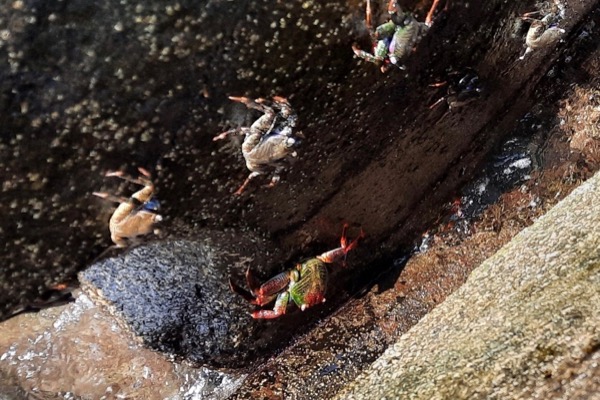
Unlike our crabs, these Canary things are turbocharged and extra horrible. While ours spend most of the time hiding, these chitter about in plain sight. If you’re freaked out a bit by regular crabs already, then these are like the equivalent of that horror film where the zombies have evolved and move twice as fast. Just unspeakably nasty.
Out on the wall, I picked out a large, surface-popping plug and hurled it as far as I could. I was wise to pack a slightly heavier lure rod here, with an 8ft 5-20g model. Anticipating just how fast and dangerous the predatory fish of these seas must be, each cast brought fresh excitement.
When the hit finally did arrive, however, it wasn’t at the horizon but just before I lifted the lure from the water. Something thin and angular had appeared from nowhere missed. After a quick change of lure to a floating plug, I soon got another jolt close in. Next shot and I got a colossal take and the strangest fish attached.

A new species for me, these lizard fish are incredibly aggressive. The name is obvious when you look at their slender design and toothy, comical head. It’s a bit like the guy behind Ren and Stimpy decided to make a fish.
Sitting on the sea bed, they wait for a suitable victim to come into view before springing upwards to make a grab. For the next half an hour on smaller lures, lizards were all I caught. They ripped up little plastics, but also liked metals- and absolutely tore into a MajorCraft Maki Jig.
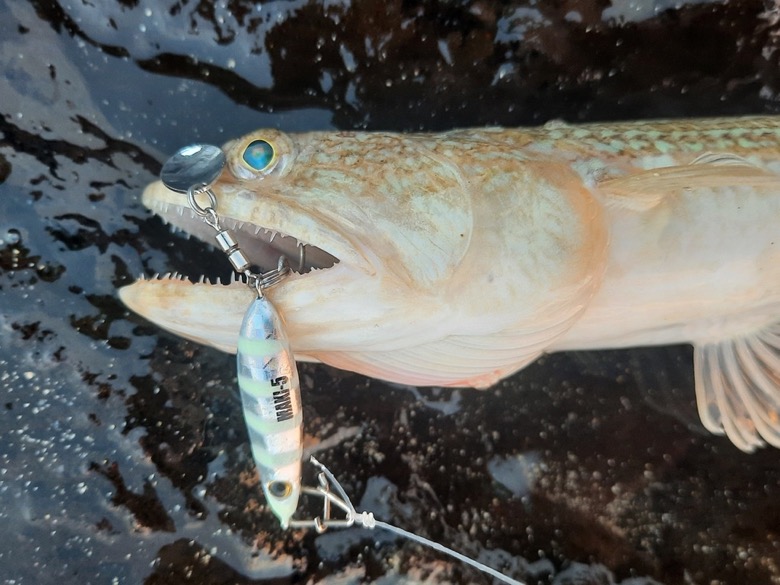
Diving in
Another popular pursuit in the Canaries, unsurprisingly, is diving. Nor do you need full gear to get quite an experience. A snorkel and mask were enough to reveal a huge amount beneath the surface- and anywhere there are rocks, there were fish.
Around the sea barriers, I saw hundreds of fish. Velvet-black damsels and blennies. Sulking lizard fish, mullet and parrotfish. But above all, it’s the sea bream that catch an angler’s eye. Lots were half a pound and bigger- and at one stage I saw a gilthead bream of about five pounds slope off to the deeps.

Unlike Greece and the Med, where you see thousands of tiny fish, Lanzarote seems to have lots of bigger ones. Whether the waters here are protected or simply too rocky to net efficiently, there are good-sized fish of all kinds. Whole shoals of large white bream came past, although these would prove tricky on lures and they seemed to feed rather like mullet, scraping rocks and other surfaces. They’d cling to structure and get into all the gaps in the wall, too, which made me ponder how often we overcast when fishing.
Perhaps the fish I liked the look of most was the striped sea bream, though. Always found on the bottom in sandy and broken ground, it is like the boar of the bream family, snuffling around for goodies on the sea bed. Unlike the other bream, it has a larger mouth for filtering out dinner. How you catch one I don’t know, but I’d love another try.
Grouper, puffers and other oddities
By midweek, I had a good idea of where the fish were and was enjoying my short sessions. Given a bit more time, I could go through various lures and presentations. One pattern I had noticed was that the fish liked bright colours and plenty of movement. Bright yellow Isome was excellent, especially used on one of my little fly jig heads, dressed in red or yellow.
Dropshot worked excellently, too, for a range of species and using hooks down to 18s I had mini bream galore, plus damsel fish and others.

A tipped metal was perhaps even better. Casting a 3g spoon trailing a little Isome, I could pick out several midwater species, including the big-eyed Bogue and Dentex. The only drawback was that my Isome was getting shredded and depleted quite fast!
Another really odd thing to catch was a puffer fish. In total I had two kinds and I’m not 100% sure about the species. As an angler, you love to catch new species- but puffer fish are a bit too Disney! Catching one on rod and line feels a bit like punching a clown- and needless to say they went back very carefully.

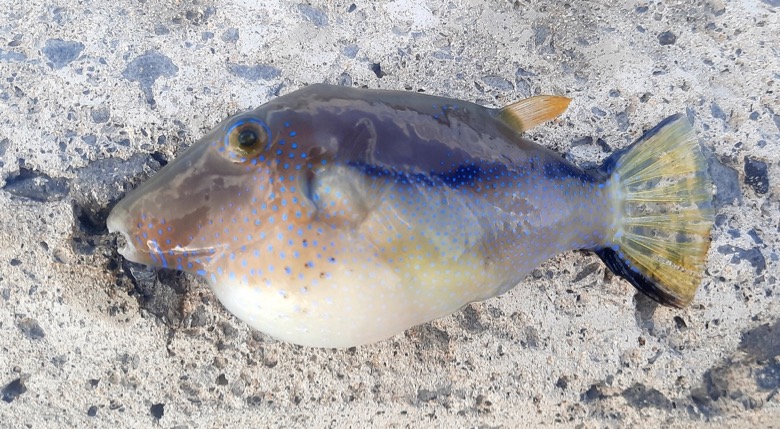
On the subject of care, barbless hooks and long nosed forceps are a godsend with unfamiliar fish, allowing quick unhooking without any need for excessive handling. Important if your next catch is poisonous, like this red sea scorpion.
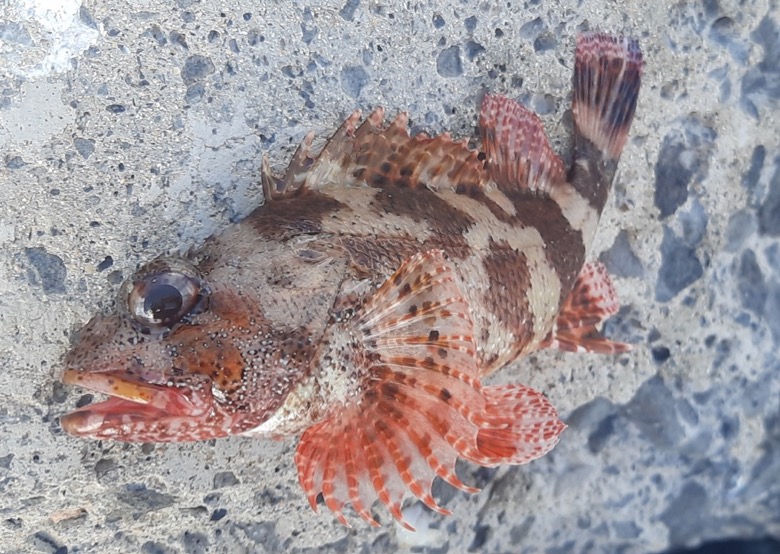
Conventional sea fishing tactics
While I am very happy lure fishing, I did also dabble a bit with bait as the week went on. In particular, I tried float fishing bits of squid for the bream. This was great in theory, but there were simply that many smaller fish that it was nigh on impossible to get through to the bigger bream! Damsels and wrasse might look pretty, but shred baits in seconds.
One solution is to leave your squid in the sun for a while. This certainly makes it last a bit longer. I also tried legering, but didn’t have any of the larger fish I’d seen. However, with a travel beach rod, there would be some great possibilities, including night fishing for large rays.
As bite filled as the bait trials were, though, I felt like I had more scope with lure fishing. Grouper came next and I had a superb dusky grouper right off the sea wall.

Next day, I had a much bigger one of around a pound and a half, casting into rocks with a Fiiish Black Minnow. It really walloped the lure and even on the heavier gear and 10lb fluorocarbon, took some landing and was the best fight of the holidays.
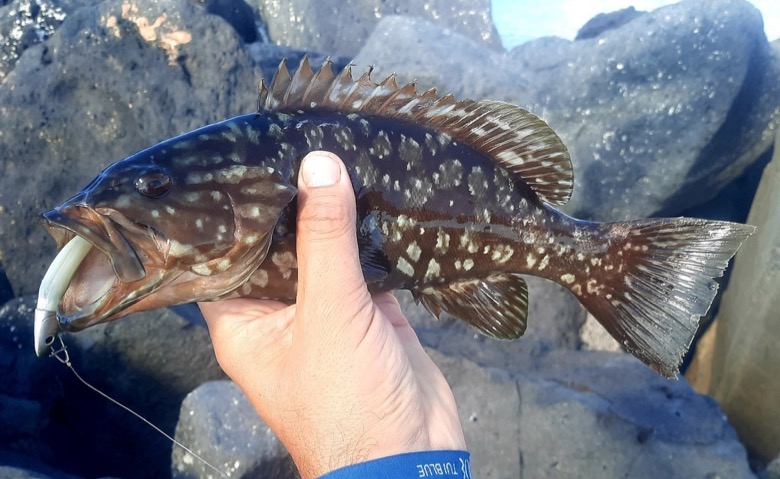
Octopus fishing?
As for the strangest encounter of the holiday, that would probably be a tug of war with an octopus. It was on the beach, and I’d been casting a small fly jig tipped with isome. I felt a curious resistance- quite unlike a fish- and was surprised to see a small octopus completely wrapped around the lure. I very nearly landed it, but when it came close in, the creature managed to stick itself to the rocks and was virtually immovable! My barbless lure didn’t come back, but will have easily been shed.
A night or two later, as we ate at a local taverna, I then saw two men octopus fishing. At first I wondered what they were doing, as one had gloves and a stange long-handled landing net. He even had a Union Jack shirt, hence I assumed he was a clueless holidaymaker with fancy gear and no idea. How wrong I was, because after a few casts he skillfully dragged in an octopus, which went into a special container bag around his belt. I’m not partial to octopus myself, but apparently it’s a local delicacy and some of the locals specialise at “fishing” for these and almost nothing else.
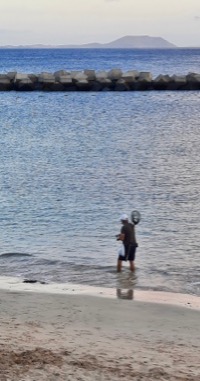
We did see other anglers too. I was fascinated to see two guys catching tiny fish for livebait, before launching these out on the waves with a balloon. With the wind behind them, they were getting a hundred metres and more. What were they hoping to catch, I wonder? Shark? Barracuda?

One last cast!
Although, yes, I am fishing obsessed, family holidays mean a lot more than just grabbing a rod and going to the beach. There was so much else to do in Lanzarote, too. The local town and market were colourful, and we had some brilliant walks.

Carrying my fast-growing daughter for miles on my shoulders also did wonders to counter the effects of the all-inclusive diet. I’m never one for doing too much on holiday, but it was also worth seeing the island’s Timanfaya National Park. The only way I can describe it is otherworldly. It’s raw. like being on the moon at times. You see dried rivers of lava, weird rock formations and crazy examples of ground heat- which can throw columns of steam or even cook your food.
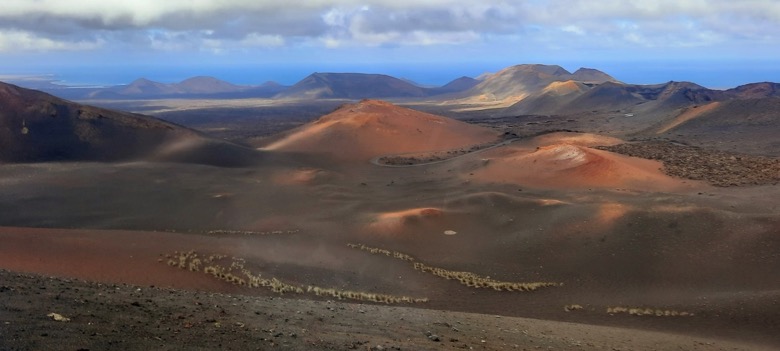
Spectacular, to say the least, and there are also giant, eerie salt fields and wineries and other stuff. The food culture is especially rich- not surprising with all that sea and volcanic soil. One speciality I especially liked was the Canarian Mojo sauces, which are great for potatoes or fish for anyone with a taste for chilli.
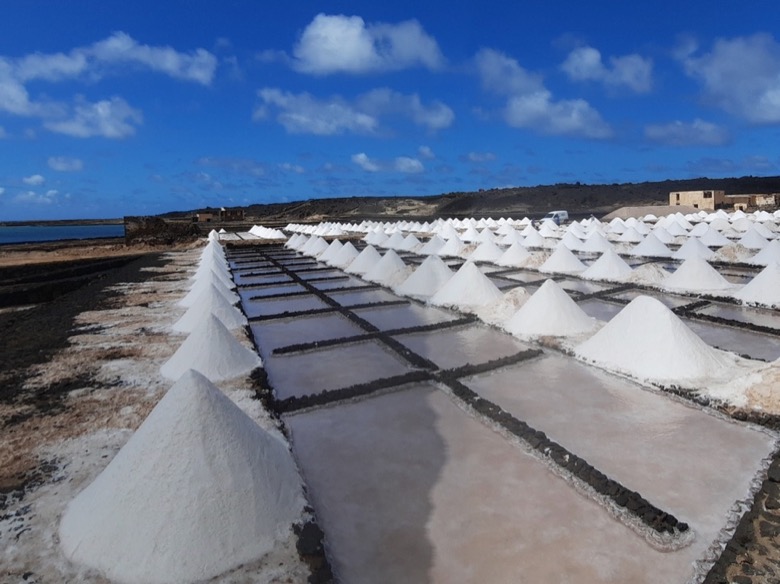
They say the sweetest hours are stolen and that was the case on my final day in Lanzarote, when we’d walked to a different beach. A quick dive revealed some spectacular bream- as with our own Black Bream, these fish look so primitively pretty, like they are wearing war paint. I still wanted to catch a reasonable one on a lure. With the fish scraping at the rocks, however, it would need a jig fished quite deep, right amongst it.
Once again, there were so many cool but already caught species down there! But by donning the diving mask, I could pinpoint a shoal of bream and take aim. Eventually, I got a fantastic hit on jigged Isome, and the rod bent a little deeper. Surely a proper bream this time? It wasn’t the desired white bream, but a fabulous painted comber. I’ve had them in Greece before, but not at this very decent size- and it fought like a boxer.
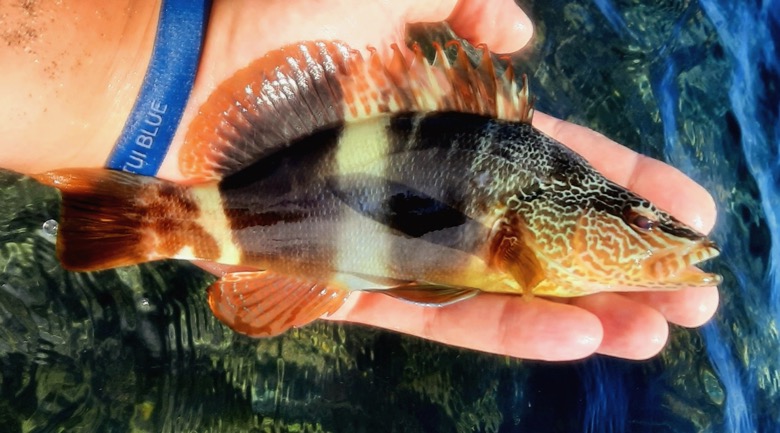
The next fish felt decent, too. For a few nervous seconds, I thought my jig was stuck in the rocks, before I felt contact again. Having a rod with a 1oz tip really does magnify battles with smaller fish- and you get to really feel their aggression and ferocity. This time it was indeed the target species- a sea bream, and on a lure.
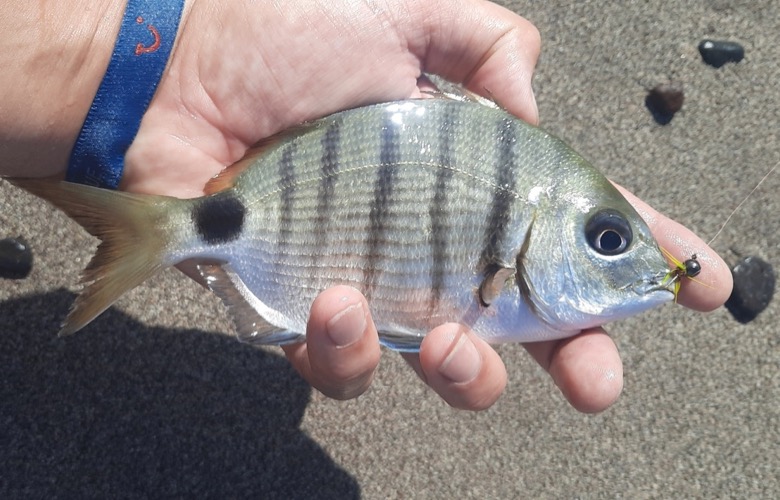
It was so beautiful on the beach that we almost lost track of time. Paulina, my wife, however, thought it was an hour later, when in fact Lanzarote has exactly the same time zone as the UK. My daughter was playing in the sea, the sun was up and at this stage every other cast seemed to produce a fish.
I finished up using a tiny metal tipped with Isome- and to be honest if I used no other method the whole holiday, I’d have caught plenty. The little 3g Majorcrafts were ideal- and throughout the trip I noticed that colours like yellow, pink and red drew an excellent response from fish. Similarly with Isome, bright yellow or red worked superbly well.
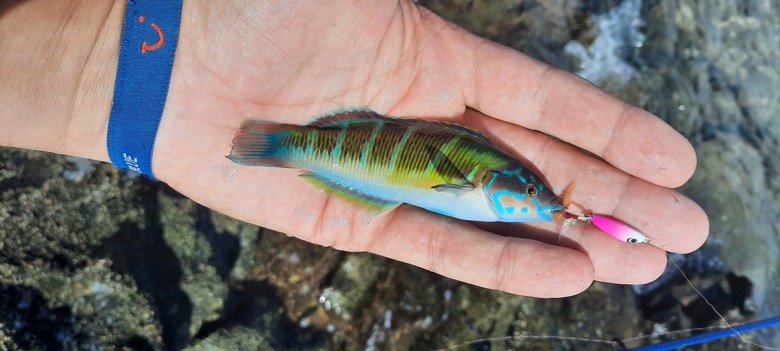
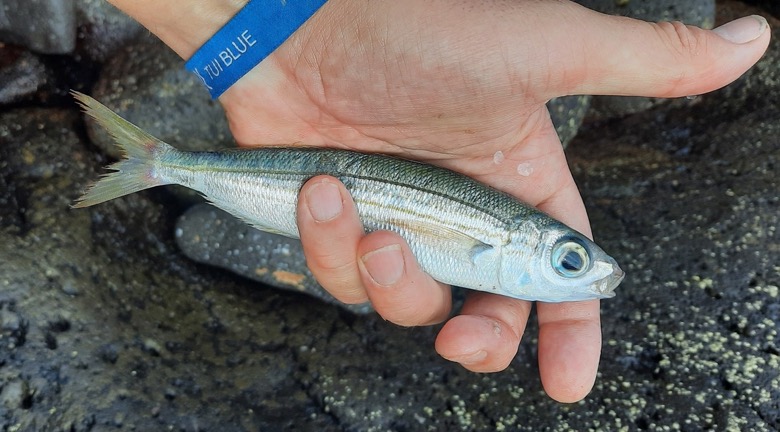

I finished the holiday on 13 species, at least six of which were completely new to me.
Saddled Bream
White Bream
Gold lined bream
Ornate Wrasse
Black Damsel Fish
Bogue
Atlantic pufferfish
Pufferfish (Other!)
Dusky grouper
Lizard Fish
Red sea scorpion
Painted Comber
Pompano (?)
What a great destination to mix family and fishing time.


